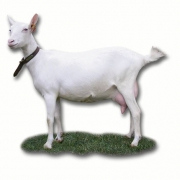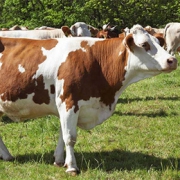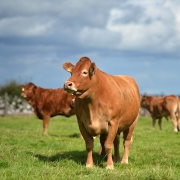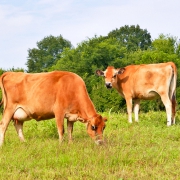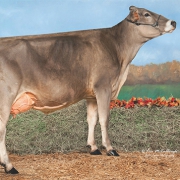Sannen
Origin and location
The Saanen breed is used in particular in the South-East, the Centre and the West of France. It gives excellent results, showing that it can adapt to a wide variation of different foodstuffs, in the mountains or in the plain.
Aptitudes and uses
The Saanen goat is a thick-set solid animal, with high milking qualities which adapts very well to different farm management methods, notably intensive. The Saanen goat is calm, strongly developed, with a short, dense, silky coat. The coat is uniformly white. The head has a straight profile. The chest is deep, wide and long, hence its great thoracic capacity. The shoulder is wide and well attached, the withers full and well covered. The legs are correct and the walk regular. The udder is well attached, very wide at the top.
Performances
The Saanen is the most widely distributed breed in the world of the milking goat breeds. Since the 1970s, it has had a spectacular development in France, where selection is aimed at improving milk production (milk yield, protein and fat %) and morphology. With more than 120,000 goats in performance testing, 27,800 of them by artificial insemination, the French Saanen breed is the most successful of its category in the world.

